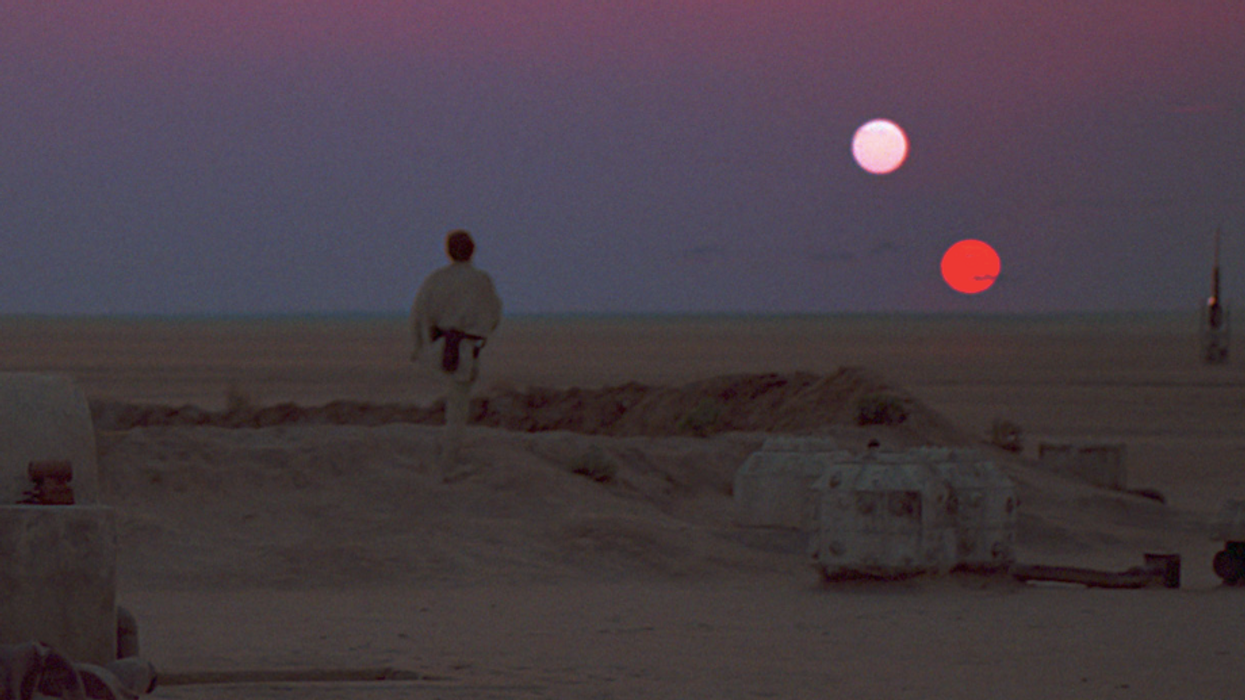Alex Daniel
Jun 15, 2023

BEBOP-1C orbits two suns, and it's in our very own galaxy
Lucasfilm/Disney
When the makers of the Star Wars film franchise dreamt up a planet with two suns in the 1970s, they gave sci-fi enthusiasts some of the most iconic images of the series.
How could fans forget a young Luke Skywalker staring into the double sunset on the desert planet of Tatooine in Star Wars Episode IV: A New Hope?
Back then, planets like Tatooine seemed like they were confined to science fiction. But the films have come a long way since then – and so has science.
Sign up to our free Indy100 weekly newsletter
This week, an international research team announced the discovery of a Tatooine-like planet which is orbiting two suns in our own galaxy – not so far, far away.
\u201cFresh off the press! We've discovered a new Tatooine-like planet called BEBOP-1c. \ud83e\ude90\nThe planet has two stars in its sky, and is the first circumbinary planet found with radial velocities.\n#BEBOP1c #exoplanets #StarWars \n@sairam_lalitha\u201d— Matthew Standing (@Matthew Standing) 1686584212
The planet, which has been given the groovy name BEBOP-1C, was first announced in Nature journal by a team which included experts at the universities of Birmingham, London, St Andrews and Keele. The planet was named after the project that discovered it: Binaries Escorted By Orbiting Planets.
When a planet circles two stars like this it’s known as a circumbinary solar system, and BEBOP-1C is not the first of its kind to be discovered. In 2011, scientists discovered the very first circumbinary planet, Kepler-16b.
In fact, this isn’t even the first planet to be discovered circling the same two stars – that was BEBOP-1C’s neighbour found in 2019, TOI 1338b. Catchy.
This newly-discovered planet is a gas giant, while TOI-1338b is a Neptune-like ice giant, according to NASA. BEBOP-1c is also further away from its star and is on a wider orbit than TOI-1338b.
Professor David Martin of Ohio State University, who was part of the research team, said: “Only 12 circumbinary systems are known so far, and this is only the second that hosts more than one planet.”
The Tatooine-like planet’s year is about 215 Earth days, and it is 65 times heavier than our, the researchers said. Its two stars orbit each other every 15 days, with one of them being about 10 per cent more massive than the sun, while the other is cooler, less bright, and just one-third of the sun’s mass.
Dr Rosemary Mardling from Monash University School of Physics and Astronomy, who also co-authored the study, added: “BEBOP-1c is almost as close as it can be to the two stars. Any closer and it would be kicked out of the system by the binary’s strong gravitational field.”
Researchers added that circumbinary systems, rare and far, far away as they might be, are important in helping scientists learn how planets form.
They wrote: “If we are to unravel the mysteries of circumbinary Tatooine-like exo-atmospheres, the BEBOP-1 system may provide a new hope.”
Have your say in our news democracy. Click the upvote icon at the top of the page to help raise this article through the indy100 rankings.
Top 100
The Conversation (0)













